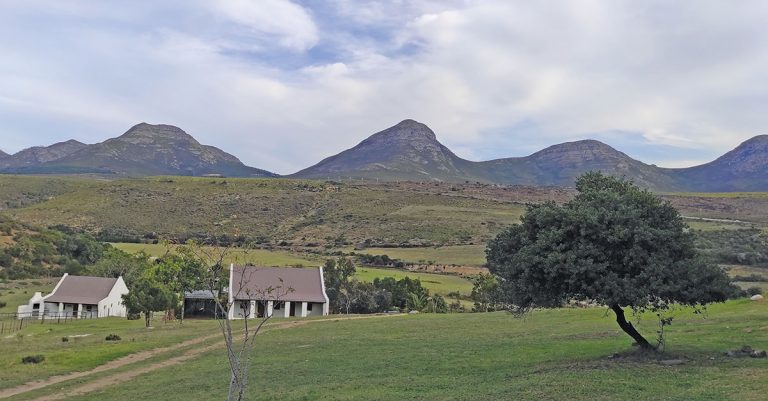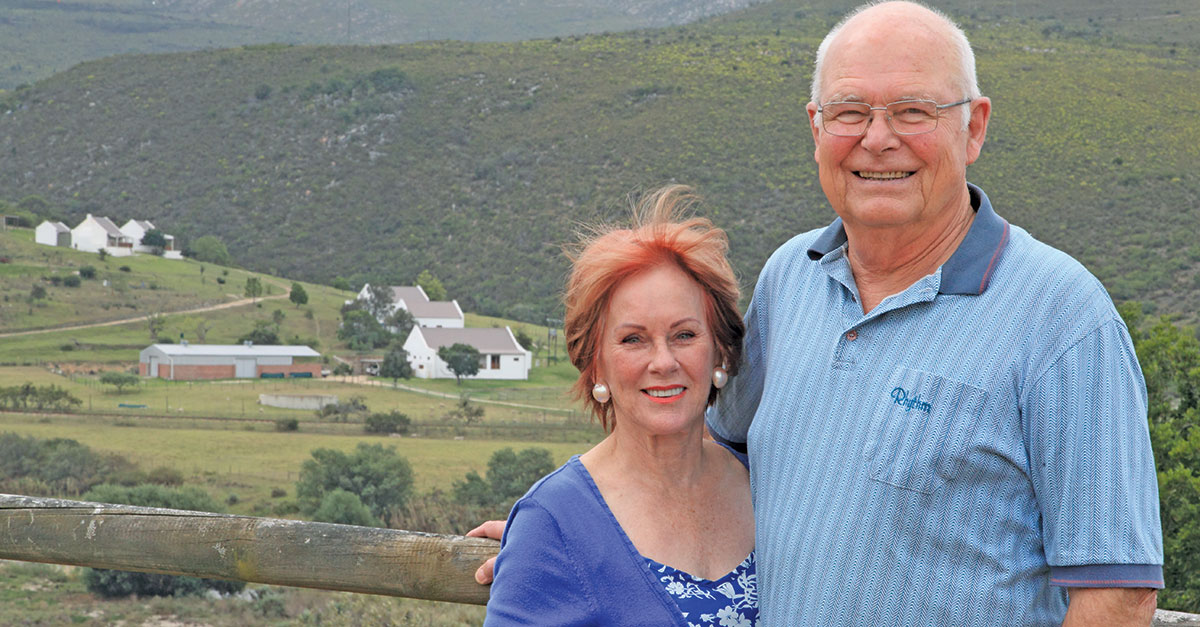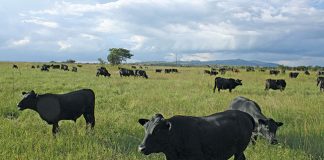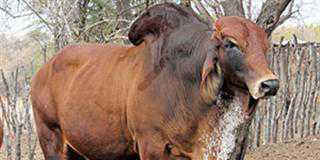
Photo: Wouter Kriel
Kareedouw is a small town in the Eastern Cape, 150km from Gqeberha (formerly Port Elizabeth) and nestled between the Tsitsikamma and Suuranys Mountains. It is here that André Hamman, recently retired from a career in the medical field in Pretoria, stumbled across a new and unexpected adventure.
“My wife Maritha and I relocated to Nature’s Valley [in the Southern Cape] in the early 2000s, settling into a relaxed life of gardening and playing golf. One weekend we went to visit friends near Kareedouw, and came across a very neglected farm that was for sale,” Hamman recalls.
He thought it would be a good idea to have a small weekend getaway place. “The farm was completely derelict with uninhabitable houses, and some of the river courses were overgrown with alien vegetation. In some cases, it was so bad you couldn’t see or reach the water.”

However, the farm had good water sources and high potential, so the Hammans bought it in 2006.
A challenging start
Soon after the transaction was concluded, the farm experienced extreme flooding when
the Kromme River overflowed its banks. Cultivated lands and infrastructure such as roads and fences all suffered extensive damage.
Hamman submitted a claim for the flood damage, and the Eastern Cape government approved funding to cover 70% of the claim for the restoration project, with the new owner being responsible for 30% of the costs. The Working for Water initiative became involved with alien vegetation clearing in 2008.
At the same time, Hamman’s son, Johan, indicated he might be interested in farming as he was in-between jobs.
“This led to Johan and me living in the newly constructed shed on the farm while the government-sponsored restoration work was taking place,” recalls Hamman.
Serious planning began in 2007. The farm is 950ha in size, and consists of 70% mountainous terrain. Four ravines lead from the mountains, and three contain strong fountains that eventually feed into the Kromme River, which runs the length of the farm.
“As the alien clearing work progressed, we saw more and more potential in the idea of restoring camps with permanent pastures along the river,” says Hamman.
Enter the Nguni
The terrain was a key reason that Hamman ended up choosing the Nguni breed. “Our farm isn’t in a traditional cattle area, so I was looking for a breed with a reputation for adaptability. The smaller-framed Ngunis are well suited to the difficult mountainous terrain on our farm. They also have a reputation for being able to maintain themselves well without constant inputs from the stock farmer, which is important to us, as it can become quite an effort to gather the animals once they’re in the mountains.
“A breed should be evaluated in terms of its profitability per hectare, and the low maintenance costs of Ngunis appealed to me.”
Hamman approached his brother, Gerhard, an established Nguni stud breeder in Amersfoort, Mpumalanga, and in 2009, bought 50 older cows and a bull from him as his core herd.
Today, the Suuranys Nguni Stud consists of between 75 and 100 breeding animals, with a total herd of around 200 animals, depending on the natural carrying capacity of the veld.
“We aim to breed animals that not only survive, but thrive in our natural environment. We produce natural, non-manipulated, veld-raised beef cattle,” says Hamman.
The Ngunis adapted well to the fynbos veld, roaming the mountains and feeding on the natural vegetation.
“They select their favourite fynbos and grasses, and we bring them down to the permanent pastures only when we want to work with them. We provide a maintenance lick during summer and winter.”
The bulls are with the herd throughout the year, apart from three months before the new breeding season starts.
Disease prevention
“We counted on the Ngunis’ natural adaptability to adjust to the environment, but also learnt some hard lessons along the way,” recalls Hamman.
The Ngunis they bought came from a redwater and gallsickness area in Mpumalanga, and were not dipped on arrival.
“That was a mistake, as we lost almost 20% of the herd to Asiatic redwater, a deadly strain they were not exposed to in Mpumalanga. We had to kraal the herd and do fever checks daily to nurse them back to health.”
Since then, all new animals have been treated for redwater on arrival at Nguniland. They receive two redwater treatments, but the second application is at a 50% dosage.
“After 13 years, the herd seems to have built up sufficient natural immunity,” says Hamman.
As there are only a few other cattle farmers in the area, the risk of animal diseases spreading to the Hammans’ herd is relatively low. Their vaccination programmes for both cattle and sheep follow mandatory requirements and include treatment for liver fluke twice a year. The cattle seldom need dipping more than once a year.
The Hammans also improve biosecurity through managing animal movement on and off the farm. With the exception of bulls, no other animals from outside are allowed on the farm.
Hamman says that all of the stud sales are held on the farm.
“It’s so much simpler than having the hassle of transport and admin that comes with auctions.”
It also holds the advantage that buyers can see the animals in their natural environment.
The stud is maintained by initially keeping the heifers for later selection.
“I believe in the rule that the most fertile cows will calve earliest, so we deregister cows that calve late,” Hamman explains. “We have to manage our numbers well, so we sell in-calf cows and heifers annually. We market our bull calves when they’re between 18 and 24 months old.”
Asked what advice he would give to a beginner cattle farmer, he says: “You’ll save money and trouble if you buy as many animals as possible from one or two reputable sources. This avoids animals having to adjust to one another, and reduces the risk of introducing new diseases into your herd.
“Even if you can’t afford stud animals, you can still buy commercial animals from a stud breeder. It can happen that an animal is not stud-classified or is deregistered for some reason, but it’s still a high-quality commercial Nguni, and at a lower price.”
He suggests putting a core herd together with a spread of differently aged cows.
“Pay attention to older cows, as they possess qualities the breeder valued; that’s why they’re still in his/her herd. And ask for advice on a suitable bull for your specific herd.”
Hamman has a final word on evaluating Ngunis: “Don’t be fooled by colour when evaluating Nguni cattle; there’s no correlation between colour and quality. Rather ask a knowledgeable Nguni breeder for help in putting a herd together.”
Sheep in the mix
In 2017, Johan suggested that they add Dohne Merino sheep to the farm, as the breed is well established in the region, and offers an income from both wool and meat. Hamman agreed, and today they keep around 300 ewes and lambs.
“The sheep require much more attention and care than the cattle, and we have to guard against predators and stray dogs all year round,” he says.
They sell the ram lambs at five-and-a-half months at a weight of at least 35kg. They market certified in-lamb ewes annually in February, and wool twice a year. The Hammans also supplement their Nguni business with income from tourism through five self-catering cottages on the farm. The guest houses and sheep business help strengthen year-round cash flow.
Email André Hamman at [email protected], or visit nguniland.co.za.













